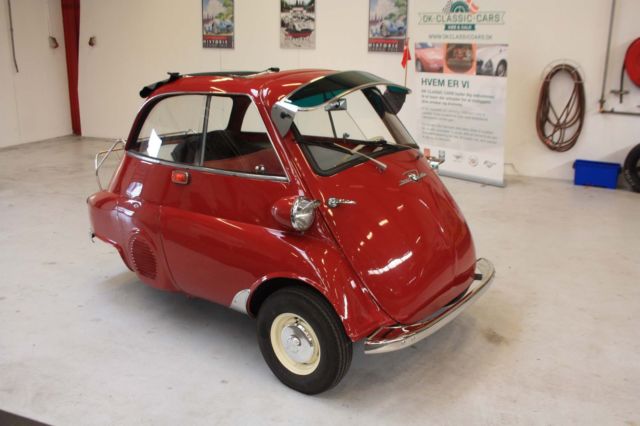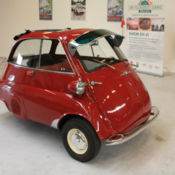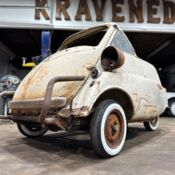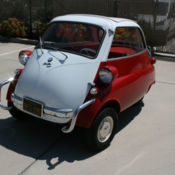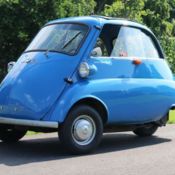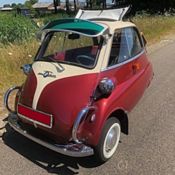1960 BMW Isetta 300 - NO RESERVE
1960 BMW Isetta 300
1960 BMW Isetta 300
The car looks and drives amazingly. The car has no mechanical or cosmetic issues and can be enjoyed as is for many years to come. This is the micro car to have. These cars are gaining in popularity.
Car Specifications:
Odometer: 05852 Kilometer
VIN: 605525
First registered: March 30, 1960
Engine: 298 cc, rear-engine, rear-wheel-drive
Transmission: 4-speed manual (with reverse)
History of the BMW Isetta 300:
The car originated with the Italian firm of Iso SpA. In the early 1950s the company was building refrigerators, motor scooters and small three-wheeled trucks. Iso's owner, Renzo Rivolta, decided he would like to build a small car for mass distribution. By 1952 the engineers Ermenegildo Preti and Pierluigi Raggi had designed a small car that used the motorcycle engine of the Iso Moto 200 and named it Isetta—an Italian diminutive meaning little ISO.
BMW made the Isetta its own. They redesigned the powerplant around a BMW one-cylinder, four-stroke, 247 cc motorcycle engine which generated 10 kW (13 hp). Although the major elements of the Italian design remained intact, BMW re-engineered much of the car, so much so that none of the parts between a BMW Isetta Moto Coupe and an Iso Isetta are interchangeable. The first BMW Isetta appeared in April 1955.
In 1956, the government of the Federal Republic of Germany changed the regulations for motor vehicles. Class IV licences issued from that time onward could only be used to operate small motorcycles and could no longer be used to operate motor vehicles with a capacity of less than 250 cc. At the same time, the maximum capacity allowed for the Isetta's tax category was 300 cc. Class IV licences issued before the change in the regulations were grandfathered and allowed to be used as before.
This change in regulations encouraged BMW to revise their Isetta microcars. In October 1956, the Isetta Moto Coupe DeLuxe (sliding-window Isetta) was introduced. The bubble windows were replaced by longer, sliding side windows. The engineers had enlarged the single cylinder to a 72 mm (2.8 in) bore and 73 mm (2.9 in) stroke, which gave a displacement of exactly 298 cc; at the same time, they raised the compression ratio from 6.8 to 7.0:1. As a result, the engine power output rose to 10 kW (13 hp) at 5200 rpm, and the torque rose to 18.4 N·m (13.6 ft·lbf) at 4600 rpm. The maximum speed remained at 85 km/h (53 mph), yet there was a marked increase in flexibility, chiefly noticeable on gradients.
We will assist with shipping throughout the world. Expect shipping to New York to be about 1,000 USD and St. Petersburg about 900 USD.
- Condition: Used
- Make: BMW
- Model: Isetta
- SubModel: Isetta 300
- Trim: 300
- Year: 1960
- Mileage: 5,852
- VIN: 605525
- Color: Red
- Engine size: 0.3L 298CC 18Cu. In. l1 GAS OHV Naturally Aspirated
- Fuel: Gasoline
- Transmission: Manual
- Drive type: RWD
- Interior color: Red
- Vehicle Title: Clear Want to buy? Contact seller!
